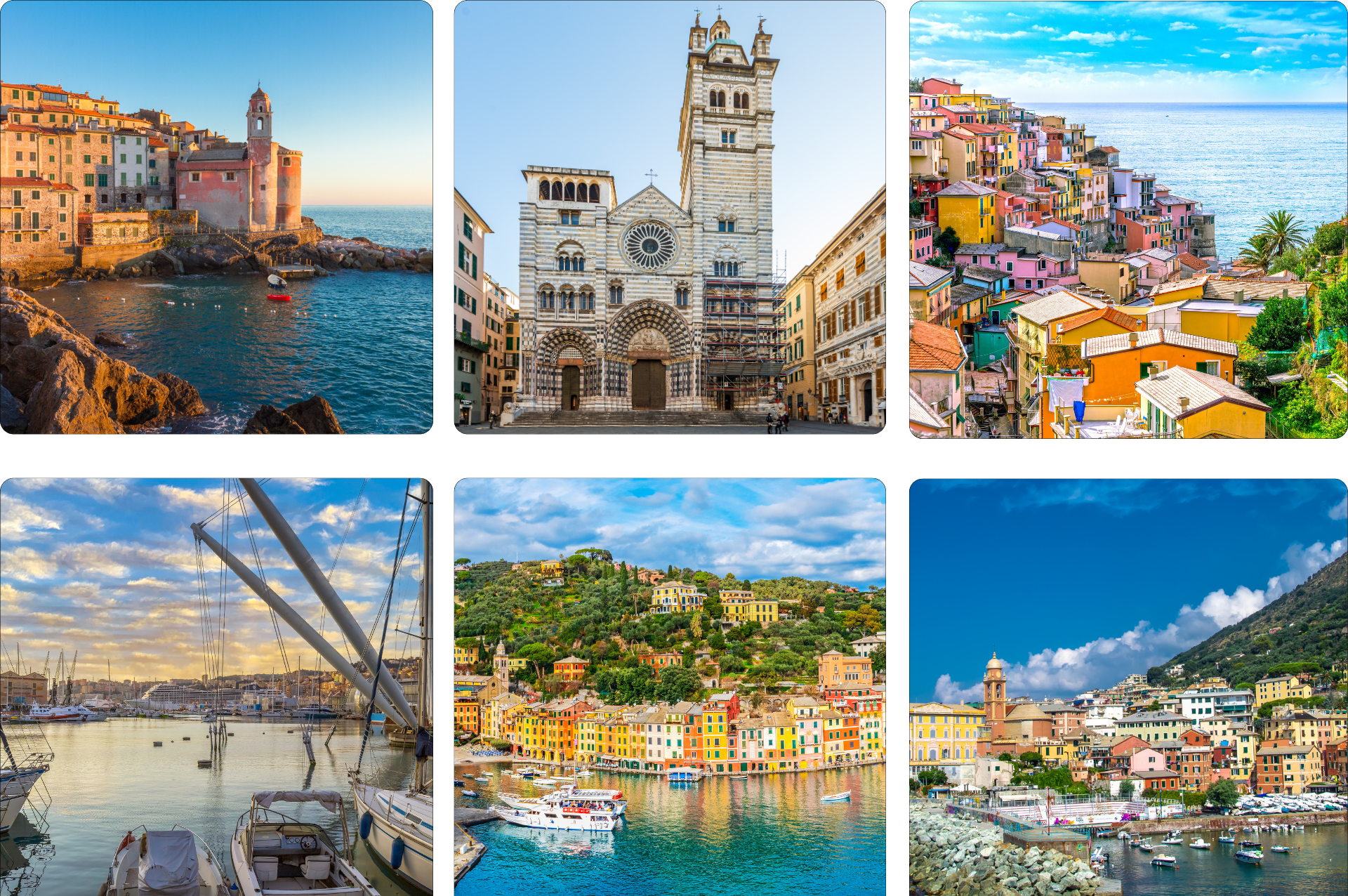Liguria

History and geography of Liguria: a unique heritage
Liguria, a region located on the northwestern coast of Italy, boasts a rich and fascinating cultural history that is intertwined with its unique geography. Characterized by mountains that plunge into the sea and coastal inlets, the region has hosted maritime and commercial communities since ancient times, influenced by various historical periods, from Roman domination to the maritime republics up to the unification of Italy. 
Monuments and museums: treasures of Liguria
The monuments and museums of Liguria tell the thousand-year history of the region through impressive architecture such as the Cathedral of San Lorenzo and the Palazzi dei Rolli in Genoa, the Castello Brown in Portofino, and historic sites such as the Church of San Pietro in Portovenere. These places, together with notable museums such as the Palazzo Reale Museum and the Genoa Aquarium, attract visitors from all over the world. 
Ligurian craftsmanship: tradition and innovation
Ligurian craftsmanship, with its historical roots in ceramics, goldsmithing and the working of slate and wrought iron, demonstrates the creativity and skill of the region's artisans. These traditions, ranging from the production of ceramics to that of wrought iron articles, contribute to keeping the Ligurian cultural heritage alive.
Ligurian cuisine: tradition and diversity
Ligurian cuisine, with its use of fresh local ingredients such as basil in Genoese pesto and olive oil, represents a fundamental aspect of regional culture. The diversity of the dishes, ranging from chickpea farinata to focaccia di Recco, highlights the richness of Ligurian culinary traditions, rooted in the territory and its history. 
Typical Ligurian products: PDO and PGI excellence
Liguria is famous for its DOP and IGP products, which include DOP Genoese Basil and DOP Riviera Ligure Oil. These products testify to the quality and variety of the region's agricultural offer, the result of traditional cultivation techniques such as terracing, and represent an essential component of the Ligurian cultural and gastronomic identity. 
